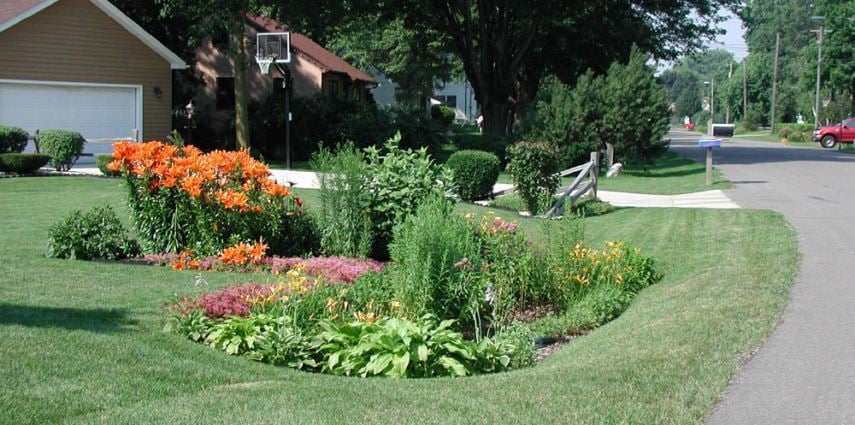We are excited to share another great article by our client, Blossom Hill Landscape & Design.
"Designing a Rain Garden in the Fraser Valley"
 Designing a rain garden in the Fraser Valley is an excellent way to control rain water, while also adding a touch of colour and texture to your landscape. A rain garden is a feature used to slow, collect, infiltrate and filter storm water. They are excellent for the environment and look great at the same time!
Designing a rain garden in the Fraser Valley is an excellent way to control rain water, while also adding a touch of colour and texture to your landscape. A rain garden is a feature used to slow, collect, infiltrate and filter storm water. They are excellent for the environment and look great at the same time!
Rain gardens are typically installed in a low spot on your landscape, it could be a natural depression or the result a of a planned grade changes. You can direct your gutter downspouts into your rain garden where plants can absorb and filter the water. Some people think that a water-hungry plant is the best for a rain garden, however, native plants are ideal for this purpose. Approximately 80% of native plants are underground, allowing them to trap and filter water more efficiently than a new species.
Rain Garden Benefits
In addition to the obvious aesthetic benefits of having a rain garden, there are several other physical benefits. Rain gardens prevent pollution from entering underground water sources. Runoff contains excess nitrogen, phosphorus from lawn fertilizers and other pollutants trapped in the rain that falls on your roof. The plants in a rain garden will absorb these pollutants, protecting the quality of nearby groundwater.
A rain garden can also protect your home from floods. Water will be absorbed rather than puddle in your yard. Standing water near your foundation can lead to water intrusion in the home.
Rain Garden Plants
When designing a rain garden in the Fraser Valley, plant choice is extremely important. Perennials are a must for your rain garden to function as a water abatement feature. Perennials have deep root systems that can survive heavy rains, or periods of drought. The middle of your rain garden needs to be anchored by plants that can handle long periods of wet garden soil, as the water will collect more in the middle. We recommend hardy grasses such as fountain grass or corkscrew rush. You can also consider some hardy hibiscus or cranesbill for colour.
The edges of your rain garden will drain faster and be drier than the middle. Some great plant ideas include gaura, coral bells, butterfly weed or cat mint. You can also include some small ornamental trees or shrubs to act as a focal point on your landscape. However, a rain garden is not the place to grow a large shade tree that will dominate the area.
Designing a rain garden in the Fraser Valley is a great way of controlling water runoff, while adding beauty and style to your landscape. We all know to expect a lot of rain in the spring, now is a great time to call Blossom Hill to discuss a new rain garden!



